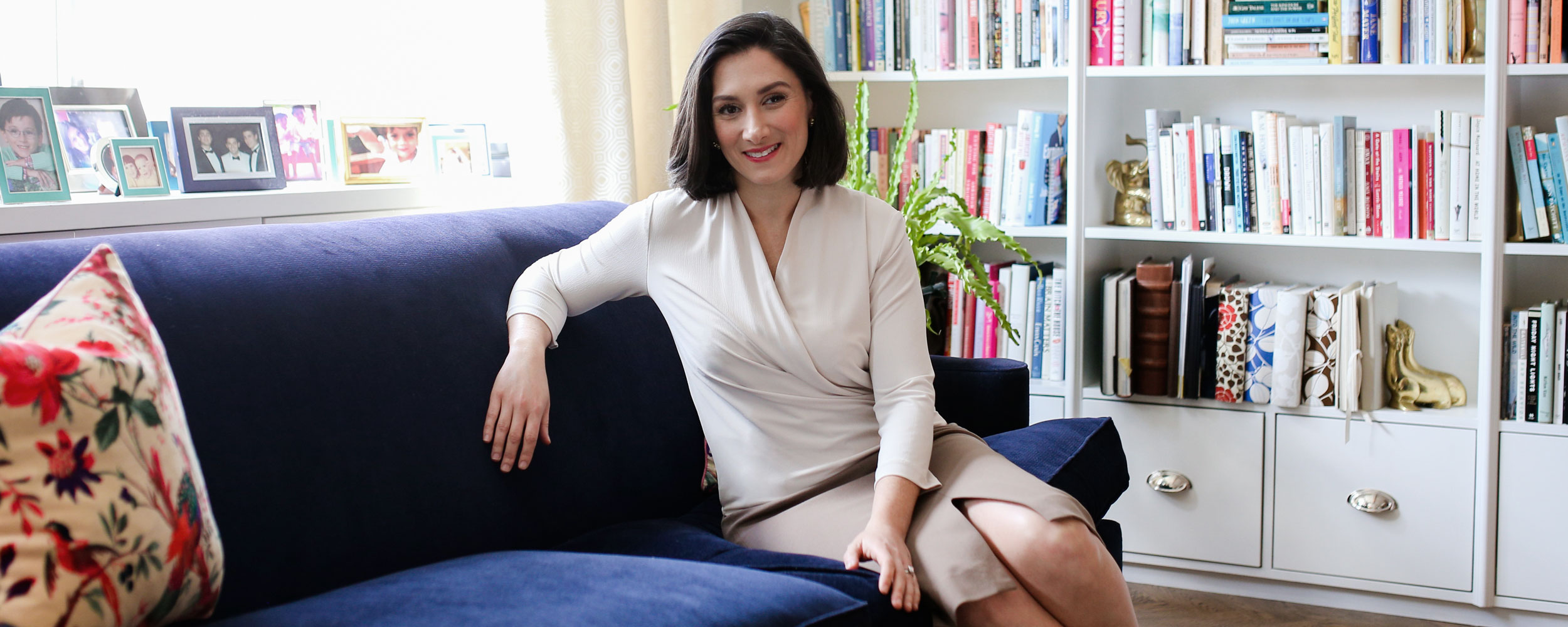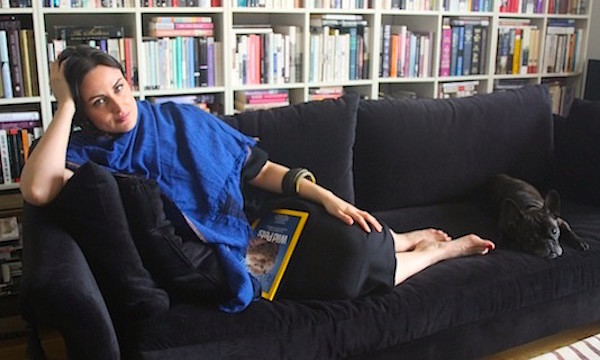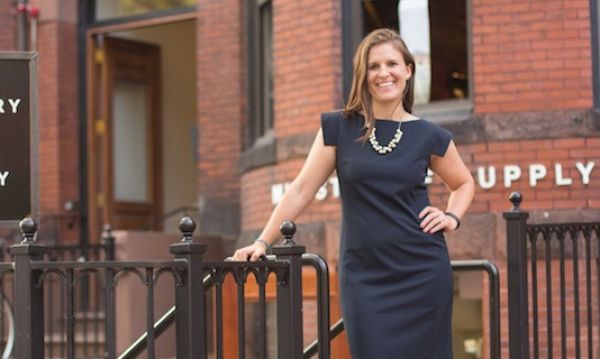Life After Maternity Leave: Lauren Smith Brody Envisions a Better Workplace for New Moms
April 08, 2017 | Filed in: Woman of the Week
Three years ago, Lauren Smith Brody—then the executive editor of Glamour magazine—came up with a book concept. She’d call it The Fifth Trimester, and it would be a carefully-researched guide for women returning to work after maternity leave. She tried to put it out of her mind (she was busy enough already!), but the idea nagged until she realized it could actually become a full-fledged business—one that wouldn’t just help women, but also advise companies on creating a better culture for new moms (and parents in general). The book came out this week, and we can’t recommend it enough—for new moms, and anyone who knows one.
A few days ago, Lauren invited us over to her New York City apartment to chat about her own post-baby experiences, her career in magazines, and unexpected uses for lip pencil.
I ALWAYS KNEW I WANTED my career to involve communicating with an audience in a way that felt inspiring and creative. I was an English major in college, with a creative writing concentration. Then I got my first job at New Woman magazine, which folded three months later. Considering I’d lost my first magazine job after only three months and still really wanted to work in the industry, I knew I must really love magazines!
THEN I GOT A JOB at CosmoGirl. When I started, the magazine was on its second issue, so I got in on the ground floor, when it was a staff of eight people. Within a couple of years, it grew to 40 people, and I got to have my hands in everything. I was right out of college and my boyfriend lived far away, so I was willing and able to burn the midnight oil—I had no pets or kids or obligations at home. I would offer to take on anything, and I worked like a maniac. I moved up fast, and got to be the features editor for my last year there.
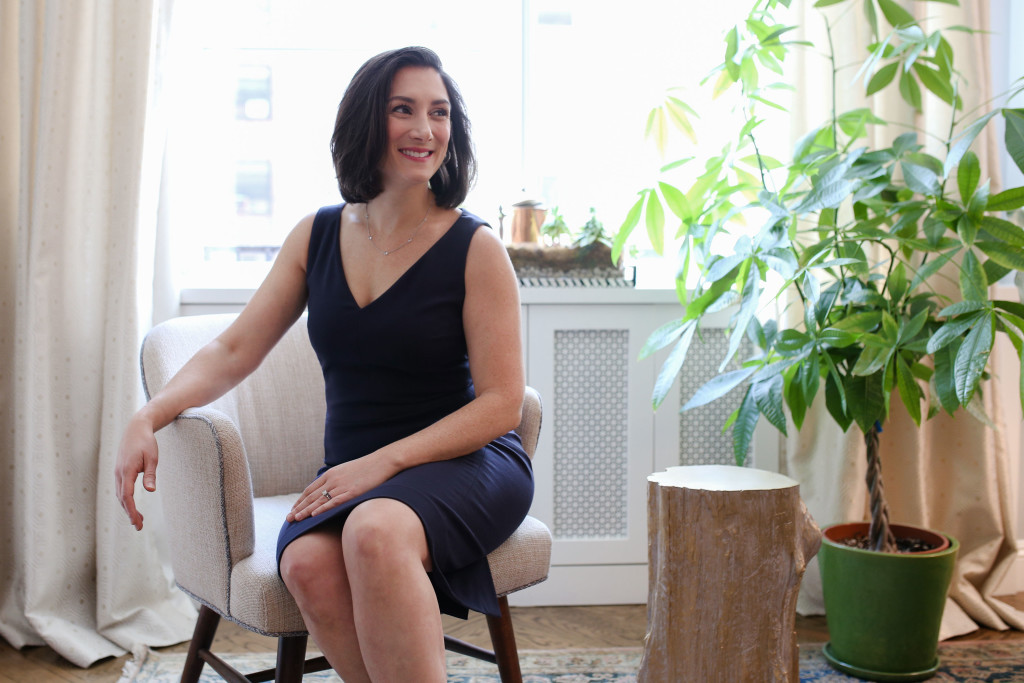
Lauren wears the Rachel dress.
I LOVED GLAMOUR magazine, and when an articles editor position opened up there, I went for it. From there, I always looked at whatever position was above mine on the masthead and grabbed it by my fingernails. I experienced the boom years of magazines. And in the years of, “Oh wow, how else can we make money?” I got to edit books that were brand extensions of columns we had, and I ran Glamour’s Women of the Year awards. Then we turned that into a TV show, which I executive produced.
I GOT THE IDEA for The Fifth Trimester about a year before I left Glamour. I remember exactly where I was when I thought of it—we were on a family vacation in Cape Cod, and I was sitting on the bed in our hotel room. I was like, “I think this could be a book, but I can’t leave my job to write this. What would I do after that?”
THE BUSINESS ANGLE of The Fifth Trimester originated over breakfast with a woman named Lisa Sun, who runs an organization called Project Gravitas. She’s one of those women with an entrepreneurial spirit that just bubbles out—she’s got more than enough to go around. At the end of our breakfast, she said, “But what do you want to do?” And I said, “What do you mean? I love my job.” And she said, “But I can tell there’s something more.” So I told her about The Fifth Trimester, and I said, “But it’s just a book. I can’t leave my job for that.” She asked me if I had a pen, and I didn’t. So she pulled out her lip pencil and a napkin, and mapped out the most simple flow chart: She drew one bubble with the book, and one bubble with the business. She said, “You’re going to write the book, and then you’re going to present companies with The Fifth Trimester plan and help them shape better policies and better culture in the workplace for moms. Go.” I was like, “Did you really just use up your lip pencil for that?” I sent her a thank-you note with two new lip pencils, and I still have that napkin.
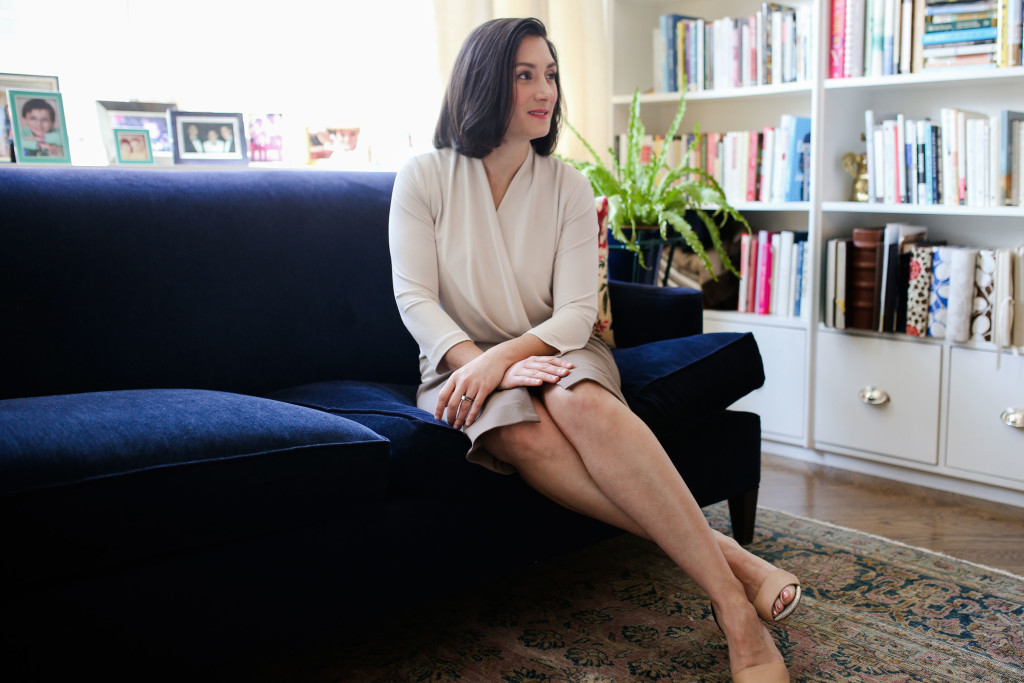
Lauren wears the Deneuve 3.0 top in cream with the Greenpoint skirt in russet.
WHEN I LEFT GLAMOUR, my first step was to write a survey about going back to work after having a baby and then post it on Facebook. It’s a long survey—50 questions—that covered topics like, “Was your boss a parent? How did your colleagues treat you when you came back? How did you feel about yourself?” I was hoping to get maybe 100 responses that would validate and inform ideas for the book, but I got almost 800 responses, so I had all of this data to pull from. I’d had a notion of what the book could be, but these responses immediately gave it a skeleton. I was able to write an introduction, make a proposal, pitch it to a bunch of agents, and then choose the agent I loved the most. I hit it off with her, and she sold the book very quickly. It took exactly 40 weeks—so, nine months—for me to draft it after that.
GOING FROM A FULL-TIME office job to working from home was definitely a process. There’s a degree of freedom that still feels new, even two years in. I definitely over-“yes”-ed in the beginning; I’m class parent for both of my sons’ classes at two different schools. There’s a learning curve. When it comes to work, it helps me to think of my day in terms of deliverables. There are days when what I produce is tangible, like a word count. When I was in the thick of writing the book, I would give myself a word count goal, and if I didn’t meet it one day, I would try to make up for it the next. What’s more challenging to measure is the period of work I’m in right now, when the deliverable is like, “Have I reached out to 50 different outlets to find support for this book? How many have I followed up with?” I’m a counter, so when I have days when it feels like I’ve done nothing but write emails, I’ll go into my sent mail and count the outreach messages.
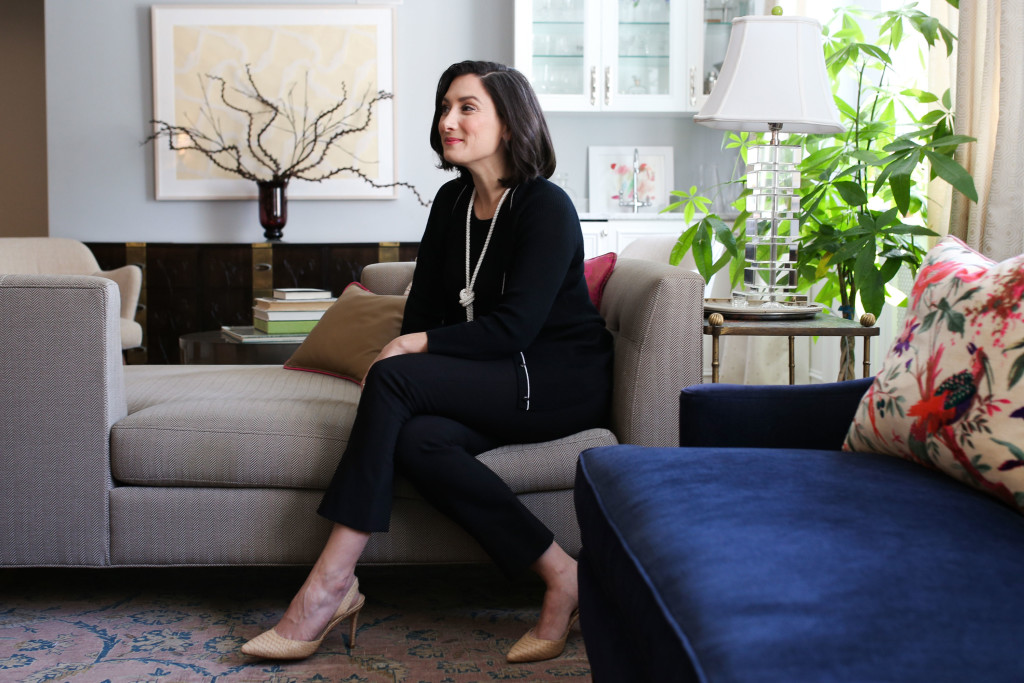
Lauren wears the Louisa top, the Alcott cardigan, and the Foster pant.
I ADVISE NEW MOMS to remember that just because your co-worker doesn’t have a child doesn’t mean that she doesn’t have something in her personal life that she cares about just as much as you care about your baby, for which she wants the same flexibility. Everyone has something outside of work, and when people are open about that, the new mom doesn’t feel so self-conscious about saying, “I have to take my kid to the pediatrician now.”
ANOTHER THING THAT HELPS new mothers is to not think of what’s going on in their personal life as being entirely to do with their uterus; it’s just a demand outside of their work life. This is why paternity leave is the great equalizer. If more men start taking paternity leave, it’s going to be better for women when they come back from leave. There’s a recent study showing that for every month of paternity leave a father takes, his wife’s lifetime earnings increase by 7%.
I REALLY WISH SOMEONE HAD TOLD ME that I wasn’t just going to come back from maternity leave a less productive, more harried person—in many ways, parenthood made me better at my job. I came back as someone who’d been through the toughest boot camp of my life, physically and emotionally. It also gave me a tremendous feeling of purpose. For many women, it makes you more efficient. It makes you much more precise about how you spend your time, because you have less of it to use wastefully. Parenthood also helps you become a better negotiator. You’re able to speak with conviction, because you’re not just advocating for yourself, you’re advocating for your family. It also makes you better at saying no to things that don’t matter, and better at saying yes to the things that do.
Photos by Yan Ruan.





